Satellite-based Navigation System has emerged as a forerunner in providing the positioning, navigation and timing (PNT) services to the users across the world. India has entered into the arena of satellite navigation with its two major projects viz. GAGAN (GPS Aided Geo Augmented Navigation), & IRNSS (Indian Regional Navigation Satellite System). GAGAN is a space-based augmentation for GPS developed jointly by ISRO and Airports Authority of India (AAI) to meet the stringent Civil Aviation Requirements. IRNSS is ISRO's initiative in developing India's indigenous regional navigation system providing PNT services to users in the Indian region.
GAGAN - GPS Aided GEO Augumented Navigation
The Indian Space Research Organization (ISRO) and the Airports Authority of India (AAI) have implemented the GAGAN project as a Satellite Based Augmentation System for the Indian Airspace. The primary objective of GAGAN is to establish a certifiable satellite based augmentation system for safety-of-life applications. The functional performance and operational requirements of GAGAN shall be governed by the specifications as mentioned in the international standards. The system shall have inter-operability with other international SBAS systems like US-WAAS, European EGNOS, and Japanese MSAS etc.
To Know more about GAGAN Click Here
IRNSS - Indian Regional Navigation Satellite System
Indian Regional Navigation Satellite System (IRNSS) project envisages establishment of a regional navigational satellite system using a combination of GEO and GSO spacecrafts and state-of-the-art ground systems. The IRNSS System provides navigation solution all time with position accuracy better than 20m during all weather conditions, anywhere within India and a region extending about 1500 km around India. IRNSS provides Standard Positioning Service (SPS) and Restricted Service (RS) to the users on dual frequencies in L5 and S band.
To Know more about IRNSS Click Here
IRNSS Satellites
IRNSS-1I
IRNSS-1I is the eighth navigation satellite to join the IRNSS space segment. Its predecessors, IRNSS-1A, 1B, 1C, 1D, 1E, 1F and 1G were launched by PSLV-C22, PSLV-C24, PSLV-C26, PSLV-C27, PSLV-C31, PSLV-C32 and PSLV-C33 in July 2013, April 2014, October 2014, March 2015, January 2016, March 2016 and April 2016 respectively. Like all other IRNSS satellites, IRNSS-1I also has a lift-off mass of 1425 kg. The configuration of IRNSS-1I is similar to IRNSS-1A, 1B, 1C, 1D, 1E, 1F and 1G.
Payloads: Like its other IRNSS predecessors, IRNSS-1I also carries two types of payloads – navigation payload and ranging payload. The navigation payload of IRNSS-1I transmits signals for the determination of position, velocity and time. This payload is operating in L5-band and S-band. Rubidium atomic clocks are part of the navigation payload of the satellite. The ranging payload of IRNSS-1I consists of a C-band transponder, which facilitates accurate determination of the range of the satellite. It also carries Corner Cube Retro Reflectors for LASER Ranging.
IRNSS-1I was launched by PSLV-C41 on Thursday morning, April 12, 2018 at 04:04 Hrs (IST) from SDSC SHAR, Sriharikota.
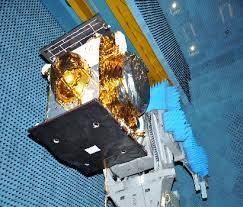
IRNSS-1I
IRNSS-1H
IRNSS-1H was planned to be launched by PSLV-C39 into a sub Geosynchronous Transfer Orbit (sub-GTO) with a 284 km perigee and 20,650 km apogee with an inclination of 19.2 deg with respect to the equatorial plane.
However, IRNSS-1H Satellite could not be placed into the orbit as mission was unsuccessful.
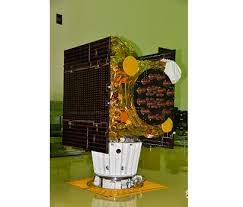
IRNSS-1H
IRNSS-1G
IRNSS-1G is the seventh navigation satellite of the seven satellites constituting the IRNSS space segment. Its predecessors, IRNSS-1A, 1B, 1C, 1D, 1E and 1F were launched by PSLV-C22, PSLV-C24, PSLV-C26, PSLV-C27, PSLV-C31 and PSLV-C32 in July 2013, April 2014, October 2014, March 2015, January 2016 and March 2016 respectively. Like all other IRNSS satellites, IRNSS-1G also has a lift-off mass of 1425 kg. The configuration of IRNSS-1G too is the same as IRNSS-1A, 1B, 1C, 1D, 1E and 1F.
Payloads: Like its other IRNSS predecessors, IRNSS-1G also carries two types of payloads – navigation payload and ranging payload. The navigation payload of IRNSS-1G transmits navigation service signals to the users. This payload is operating in L5-band and S-band. A highly accurate Rubidium atomic clock is part of the navigation payload of the satellite. The ranging payload of IRNSS-1G consists of a C-band transponder, which facilitates accurate determination of the range of the satellite.
IRNSS-1G was launched by PSLV-C33 into a sub Geosynchronous Transfer Orbit (sub GTO) on April 28, 2016 at 12:50 hrs (IST) from Satish Dhawan Space Centre (SDSC) SHAR, Sriharikota.

IRNSS-1G
IRNSS-1F
IRNSS-1F is the sixth navigation satellite of the seven satellites constituting the Indian Regional Navigation Satellite System (IRNSS) space segment. Its predecessors, IRNSS-1A, 1B, 1C, 1D and 1E were successfully launched by PSLV-C22, PSLV-C24, PSLV-C26, PSLV-C27 and PSLV-C31 in July 2013, April 2014, October 2014, March 2015 and January 2016 respectively. All the five satellites are functioning satisfactorily from their designated orbital positions. IRNSS-1F has a lift-off mass of 1425 kg. The configuration of IRNSS-1F is similar to that of IRNSS-1A, 1B, 1C, 1D and 1E. The two solar arrays of IRNSS-1F consisting of Ultra Triple Junction solar cells generate about 1660 Watts of electrical power. Sun and Star sensors as well as gyroscopes provide orientation reference for the satellite. Special thermal control schemes have been designed and implemented for some of the critical elements such as atomic clocks. The Attitude and Orbit Control System (AOCS) of IRNSS-1F maintains the satellite's orientation with the help of reaction wheels, magnetic torques and thrusters. Its propulsion system consists of a Liquid Apogee Motor (LAM) and thrusters. IRNSS -1F carries two types of payloads – navigation payload and ranging payload. The navigation payload of IRNSS-1F transmits navigation service signals to the users. This payload is operating in L5-band and S-band. A highly accurate Rubidium atomic clock is part of the navigation payload of the satellite. The ranging payload of IRNSS-1F consists of a C-band transponder, which facilitates accurate determination of the range of the satellite. IRNSS-1F also carries Corner Cube Retro Reflectors for laser ranging. IRNSS-1F was launched by PSLV-C32 into a sub Geosynchronous Transfer Orbit (sub GTO) on March 10, 2016 at 16:01 hrs (IST) from Satish Dhawan Space Centre (SDSC) SHAR, Sriharikota.
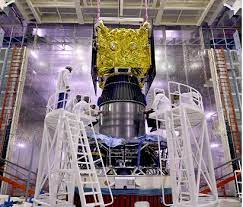
IRNSS-1F
IRNSS-1E
IRNSS-1E is the fifth navigation satellite of the seven satellites constituting the IRNSS space segment. Its predecessors, IRNSS-1A, 1B, 1C and 1D were launched by PSLV-C22, PSLV-C24, PSLV-C26 and PSLV-C27 in July 2013, April 2014, October 2014 and March 2015 respectively. IRNSS-1E has a lift-off mass of 1425 kg. The configuration of IRNSS-1E is similar to that of IRNSS-1A, 1B, 1C and 1D. IRNSS -1E carries two types of payloads – navigation payload and ranging payload. The navigation payload of IRNSS-1E transmits navigation service signals to the users. This payload is operating in L5-band and S-band. A highly accurate Rubidium atomic clock is part of the navigation payload of the satellite. The ranging payload of IRNSS-1E consists of a C-band transponder which facilitates accurate determination of the range of the satellite. IRNSS-1E also carries Corner Cube Retro Reflectors for laser ranging. PSLV-C31 Successfully launched IRNSS-1E on January 20, 2016 at 09:31 Hrs (IST) from Satish Dhawan Space Centre SHAR (SDSC SHAR), Sriharikota, the spaceport of India.

IRNSS-1E
IRNSS-1D
IRNSS-1D is the fourth navigation satellite of the seven satellites constituting the IRNSS space segment. Its predecessors, IRNSS-1A, 1B and 1C were launched by PSLV-C22, PSLV-C24 and PSLV-C26 in July 2013, April 2014 and October 2014 respectively. IRNSS-1D has a lift-off mass of 1425 kg. The configuration of IRNSS-1D is similar to that of IRNSS-1A, 1B and 1C. The satellite has been realised in less than four months after the launch of its predecessor. The two solar panels of IRNSS-1D consisting of Ultra Triple Junction solar cells generate about 1660 Watts of electrical power. Sun and Star sensors as well as gyroscopes provide orientation reference for the satellite. Special thermal control schemes have been designed and implemented for some of the critical elements such as atomic clocks. The Attitude and Orbit Control System (AOCS) of IRNSS-1D maintains the satellite's orientation with the help of reaction wheels, magnetic torquers and thrusters. Its propulsion system consists of a Liquid Apogee Motor (LAM) and thrusters.
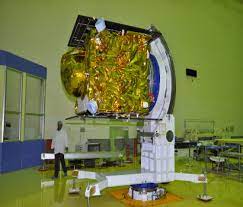
IRNSS-1D
IRNSS-1C
IRNSS-1C is the third navigation satellite of the seven satellites constituting the IRNSS space segment. Its predecessors, IRNSS-1A and IRNSS-1B were launched by PSLV-C22 and PSLV-C24 in July 2013 and April 2014 respectively. IRNSS-1C has a lift-off mass of 1425.4 kg. The configuration of IRNSS-1C is similar to that of IRNSS-1A and IRNSS-1B. The satellite has been realized in less than six months after the launch of its predecessor.
The satellite is powered by two solar arrays, which generate power up to 1,660 watts, and has a life-time of ten years. IRNSS-1C carries two types of payloads – navigation payload and ranging payload. The navigation payload of IRNSS-1C transmits navigation service signals to the users. This payload is operating in L5-band and S-band. A highly accurate Rubidium atomic clock is part of the navigation payload of the satellite. The ranging payload of IRNSS-1C consists of a C-band transponder which facilitates accurate determination of the range of the satellite. IRNSS-1C also carries Corner Cube Retro Reflectors for laser ranging.
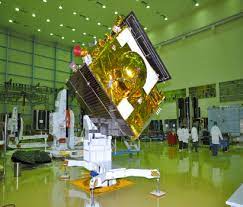
IRNSS-1C
IRNSS-1B
IRNSS-1B is the second dedicated navigation satellite of India. It is one of the seven satellites constituting the IRNSS space segment. Its predecessor, IRNSS-1A, was launched by PSLV-C22 in July 2013. IRNSS-1B has a lift-off mass of 1432 kg. The configuration of IRNSS-1B is similar to that of IRNSS-1A. The satellite has been realised in less than seven months after the launch of its predecessor.
Payloads - IRNSS -1B carries two types of payloads - navigation payload and ranging payload. The navigation payload of IRNSS-1B transmits navigation service signals to the users. This payload is operating in L5-band and S-band. A highly accurate Rubidium atomic clock is part of the navigation payload of the satellite. The ranging payload of IRNSS-1B consists of a C-band transponder which facilitates accurate determination of the range of the satellite. IRNSS-1B also carries Corner Cube Retro Reflectors for laser ranging.
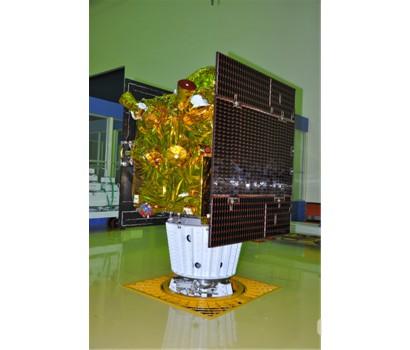
IRNSS-1B
IRNSS-1A
IRNSS-1A is the first satellite in the Indian Regional Navigation Satellite System (IRNSS). It is one of the seven satellites constituting the IRNSS space segment.
Payloads - IRNSS-1A carries two types of payloads navigation payload and ranging payload. The navigation payload of IRNSS-1A transmits navigation service signals to the users. This payload is operating in L5-band and S-band. A highly accurate Rubidium atomic clock is part of the navigation payload of the satellite. The ranging payload of IRNSS-1A consists of a C-band transponder which facilitates accurate determination of the range of the satellite. IRNSS-1A also carries Corner Cube Retro Reflectors for laser ranging.
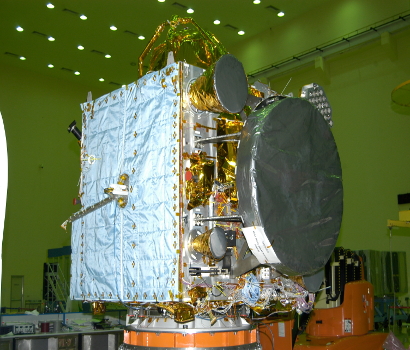
IRNSS-1A


